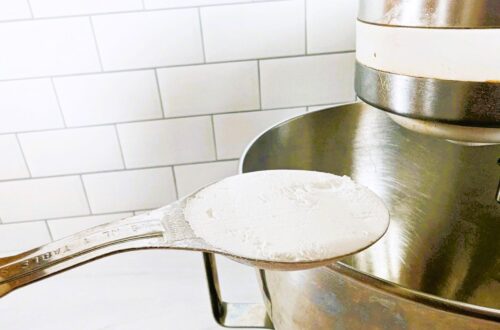
How to Zest a Lemon Like a Pro
Some of the links in this post are affiliate links. This means if you click on the link and purchase the item, I will receive an affiliate commission at no extra cost to you. All opinions remain my own.
As an Amazon Associate I earn from qualifying purchases.
If you love adding a burst of tangy flavor to your dishes, then knowing how to zest a lemon like a pro is a skill you want to master. Explore the ultimate guide by zesting a lemon to add a zesty twist to your culinary creations.
Lemon zest is the colorful outer peel of the lemon, which contains aromatic oils that can elevate the taste of sweet and savory recipes.
Using lemon zest in cocktails and drinks like lemon water adds a vibrant citrus kick and aromatic essence, enhancing the refreshing and revitalizing qualities of the beverage.
Different Methods of Zesting a Lemon
When it comes to zesting a lemon, you can try a few different methods. Each technique offers its unique advantages and can be used depending on your personal preference and the tools you have available.
Using a Microplane Zester
This method is ideal for achieving a light and fluffy texture, perfect for incorporating zest into your favorite recipes.
Using a microplane zester, hold the lemon firmly and gently scrape the zester across the peel. The sharp blades of the zester will extract fine, fragrant zest from the lemon, leaving behind the bitter pith.
“My preferred method for zesting a lemon is using a fine microplane grater. This allows you to remove just the zest of the lemon without including the bitter pith of the lemon as well.”
— Gen La Rocca, Two Cloves Kitchen

Using a Box Grater

A box grater can serve as an excellent alternative for zesting a lemon. By rubbing the lemon against the finest side of the grater, you can create tiny shreds of zest that add a burst of citrus flavor to your dishes. The box grater method may produce slightly larger zest pieces than a microplane zester, but it is still a convenient way to infuse your recipes with the essence of lemon.

Vegetable Peeler
The following method for zesting a lemon is to use a vegetable peeler. Run the peeler along the lemon’s peel, applying gentle pressure to remove thin strips of zest. Be careful not to include the bitter white pith in your zest.
For more finely grated zest, you can further mince the strips with a knife.

Using a Knife
If you lack specialized tools, you can use a sharp knife to zest a lemon. Carefully remove the thin, colored part of the peel by slicing it away from the lemon, avoiding the bitter pith. Once you have the zest, finely mince it with a knife to achieve a similar texture as grated zest.
Zest Twists
Cut thin, long strips of zest from the lemon’s peel, carefully avoiding the pith. Gently twist the strips to give them a spiral shape, which you can use as a garnish for drinks or desserts. You can create zest twists using a citrus twist peeler or a small paring knife for a decorative touch.
Tips for Zesting Like a Pro
To take your lemon zest game to the next level, consider these tips:
- Use organic lemons: Organic lemons are free from pesticides and chemicals, making them ideal for zesting. Whatever type of lemons you are going to use, wash them well before zesting.
- Zest before juicing: It is easier to zest a whole lemon than a squeezed one, so zest it first before juicing.
- Rotate the lemon: Rotate the lemon as you zest it to ensure you get an even distribution of zest and avoid the bitter pith.
- Freeze leftover zest: If you have extra lemon zest, you can freeze it in an airtight container.
The Versatility of Lemon Zest
Lemon zest is an ingredient that you can use in a multitude of ways. Here are some ideas to inspire you.
Baking with Lemon Zest
Lemon zest can add a bright and citrusy flavor to your baked goods. Sprinkle lemon zest over cakes, cupcakes, cookies or pies to enhance sweetness.
Consider incorporating it into the following recipes:
- Lemon zest cookies: Add lemon zest to your favorite cookie dough recipe for a zesty twist. The aroma and tanginess of the lemon will elevate the cookies to a whole new level.
- Lemon pound cake: Fold lemon zest into your pound cake batter to infuse it with a refreshing citrus flavor. Top it off with a lemon glaze for an extra burst of tanginess.
- Lemon bars: Sprinkle lemon zest over your lemon bars to enhance their appearance and intensify the lemon flavor.
Sauces and Dressings
Lemon zest can bring a delightful tang to sauces and dressings. Add lemon zest into marinades for meat or dressings for salads to give them a tangy flavor.
Try these ideas:
- Lemon vinaigrette: Whisk together lemon zest, lemon juice, olive oil, Dijon mustard and honey for a zesty dressing that pairs well with salads, grilled vegetables or roasted chicken.
- Lemon butter sauce: Melt butter in a saucepan and stir in lemon zest, lemon juice, garlic and fresh herbs. Drizzle this sauce over fish, shrimp or steamed vegetables for a burst of flavor.
Lemon Zest in Beverages

When it comes to beverages, lemon zest can be a game-changer. For a zingy kick, stir lemon zest into cocktails, lemonades or iced teas.
Here are a couple of ideas to try:
- Lemon-infused water: Add a few strips of lemon zest to a water pitcher for a refreshing and subtly flavored drink. It’s a healthy alternative to sugary beverages.
- Lemon zest cocktails: Rim the edge of a glass with lemon zest to add a citrusy aroma to your favorite cocktails. Lemon zest pairs particularly well with vodka, gin and rum-based drinks.
Other Citrus Fruits for Zesting
While lemon zest is undoubtedly popular, you can zest other citrus fruits. Here are a few that work well for zesting:
- Orange zest: Orange zest adds a sweet and citrusy aroma to dishes and is delightful in baked goods.
- Lime zest: Lime zest offers a tangy and refreshing twist, making it perfect for cocktails, salsas and marinades.
- Grapefruit zest: Grapefruit zest adds a slightly bitter and floral note to dishes, complementing sweet and savory recipes.
Share the Zesty Knowledge
Now that you have the skills to zest a lemon like a pro and have discovered various creative uses for lemon zest, why not share the zesty knowledge with others?
Spread the joy of zest by sharing these tips and techniques with your friends, family or fellow food enthusiasts.
Remember, zest is the secret ingredient that elevates your dishes and makes you shine as a cook.
This article originally appeared on Food Drink Life.
Amazon and the Amazon logo are trademarks of Amazon.com, Inc, or its affiliates.





